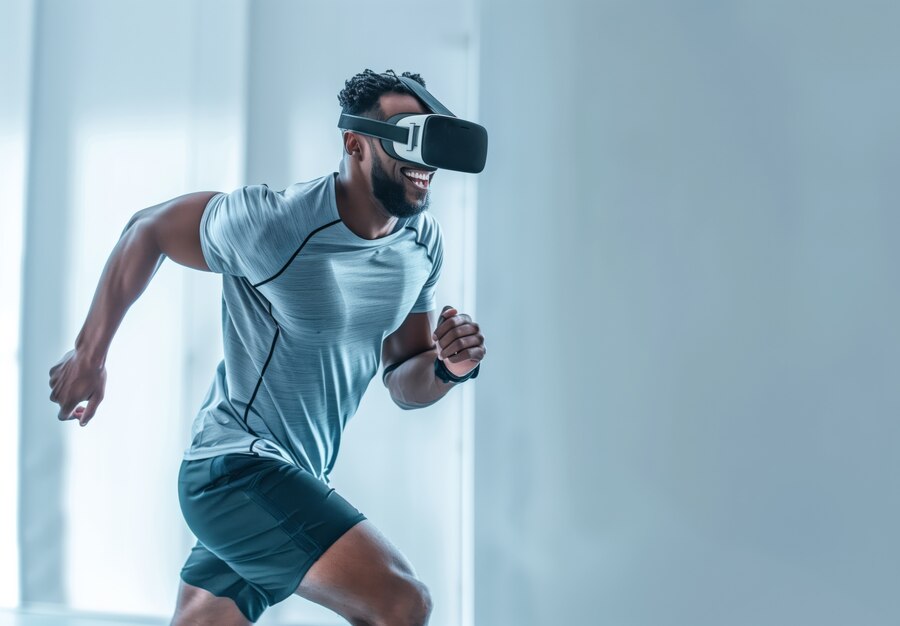Table of contents
The world of sports has evolved dramatically over the past few decades, and much of this change can be attributed to advancements in technology on sports. From cutting-edge equipment to sophisticated data analysis tools, technology has transformed how athletes train, compete, and analyze their performance. Today, athletes are using innovative technologies to gain a competitive edge, optimize their training, and track their performance in ways that were once unimaginable.
In this blog post, we will explore the various ways technology on sports has impacted training and performance analysis, from wearable devices and sensors to video analysis software and artificial intelligence (AI). We’ll also delve into how these tools are revolutionizing athlete development and enhancing performance at all levels.
The Role of Wearable Technology in Sports Training
Wearable technology has become an integral part of modern sports training. Devices like fitness trackers, smartwatches, and specialized sports wearables allow athletes to monitor their physical activity, track biometric data, and measure performance metrics in real-time. These gadgets collect data on heart rate, speed, distance, stride length, calories burned, and even muscle activation.
Monitoring Physical Performance
Wearable technology on sports has revolutionized how athletes train by providing instant feedback on their performance. For instance, a football player can use a GPS tracker to monitor running speed, acceleration, and distance covered during a training session. This data can help coaches identify areas where a player needs to improve, adjust training loads, and track progress over time.
Similarly, wearables like the Whoop Strap and Oura Ring focus on recovery metrics, such as sleep quality and heart rate variability, giving athletes insight into how well their body is recovering after intense workouts. These insights are vital for avoiding overtraining and preventing injuries, enabling athletes to maintain peak performance without risking burnout.
Injury Prevention and Rehabilitation
Technology has also played a critical role in injury prevention and rehabilitation. Devices such as Kinect-based motion sensors and force plate systems help assess an athlete’s biomechanics by analyzing their movement patterns during training. By identifying imbalances or inefficient movements, coaches can make adjustments to an athlete’s technique before these issues result in injury.
Performance Analysis Through Video Technology
Video technology on sports has changed the way athletes and coaches analyze performance. Video analysis software, such as Hudl or Dartfish, allows teams to review game footage, break down plays, and study an athlete’s performance in minute detail. This technology provides valuable insights that can’t be captured during the heat of the moment, allowing coaches and athletes to dissect both individual and team strategies.
Breakdown of Techniques and Strategies
By using video to analyze an athlete’s form, coaches can identify weaknesses in technique and help athletes improve their movements. For example, in basketball, video analysis can highlight shooting form, foot placement, and hand positioning, allowing players to fine-tune their skills.
For team sports, video analysis helps coaches break down plays, examine team strategies, and identify areas for improvement. Coaches can use these insights to adjust game plans and provide real-time feedback to players. This helps teams gain a competitive advantage, as they can evaluate and adapt their tactics to maximize success on the field.
Advanced Technologies: VR and AR
In addition to traditional video analysis, virtual reality (VR) and augmented reality (AR) technologies are increasingly being used for performance analysis and training. VR allows athletes to immerse themselves in a simulated environment to practice skills, strategies, or game situations, enhancing muscle memory and decision-making without the physical wear and tear.
For example, a quarterback might use VR to practice reading defenses and making split-second decisions before a real game. Similarly, soccer players can use AR glasses to receive real-time data during training, such as positioning information, player movement patterns, and speed metrics.
Data Analytics and Performance Metrics
One of the most significant impacts of technology on sports is the ability to collect and analyze vast amounts of data to improve performance. Sports teams and individual athletes now rely on data analytics to gain insights into their performance and make data-driven decisions about training and competition.
Data-Driven Decision Making
With the help of performance analysis software and AI-powered tools, athletes can track key performance indicators (KPIs) such as power output, reaction time, and recovery rate. By compiling and analyzing this data, athletes and coaches can create personalized training programs designed to optimize strengths and address weaknesses.
For instance, Catapult Sports, a leader in wearable technology, offers systems that track an athlete’s workload, intensity, and fatigue levels during training. This data helps coaches adjust training plans to prevent overtraining and reduce the risk of injury.
Artificial Intelligence in Sports
AI is becoming an integral tool in performance analysis, enabling coaches and analysts to process large sets of data more efficiently. Machine learning algorithms can identify patterns and trends that human analysts might overlook. AI tools can predict injury risks based on a player’s biomechanics, suggest modifications to training plans, and even predict the outcome of a game based on historical performance data.
For example, in tennis, AI systems can track players’ movements on the court, analyze their shot selection, and offer insights into their tactical approach. This helps players refine their strategies and improve their competitive edge.
Enhancing Fan Engagement and Experience
Technology on sports is not limited to training and performance analysis; it has also revolutionized the fan experience. Sports fans now have access to immersive technologies such as 360-degree video, live-streaming, and wearable fan devices that allow them to interact with games in real-time. Augmented reality is also being used in stadiums to enhance the fan experience, with features such as interactive game stats and player tracking available at their fingertips.
Additionally, social media platforms have enabled athletes and teams to engage directly with fans, providing behind-the-scenes content, live updates, and interactive features that make fans feel more connected to their favorite teams and players.
Frequently Asked Questions (FAQ)

Wearable technology allows athletes to monitor their physical performance in real-time, track metrics like heart rate and speed, and analyze recovery data to optimize training and prevent injuries.
Video analysis enables athletes and coaches to break down game footage, assess technique, and improve strategies. It helps identify areas for improvement and allows for more targeted coaching.
AI algorithms can process large amounts of data and identify patterns that can inform training and competition strategies. AI tools can also predict injury risks and suggest modifications to an athlete’s regimen.
VR allows athletes to practice in a simulated environment, improving their decision-making, muscle memory, and reaction times without the physical toll of traditional training.
The future of technology on sports includes further advancements in AI, data analytics, VR, and wearables. These technologies will continue to enhance training methods, improve athlete performance, and transform fan engagement.
Final Thoughts
The impact of technology on sports is undeniable. From wearable devices that track physical performance to sophisticated video analysis software and AI-driven insights, technology has transformed the way athletes train, compete, and improve. These innovations have not only made sports more exciting for fans but have also empowered athletes to reach new levels of performance.
As technology continues to evolve, it’s clear that the future of sports will be defined by data, innovation, and the ability to optimize every aspect of athletic performance. Whether you’re an elite athlete or someone passionate about sports, embracing these advancements will undoubtedly shape the future of training and competition.




